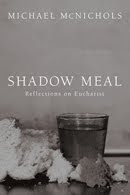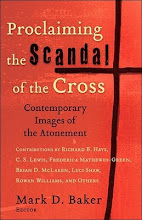
I’ve been thinking, since writing yesterday’s post, about the relationship between certainty and confidence (I hope that alert readers caught the ironic closure). There is, I think, certainty that results from experience and observation, and certainty that is born of confidence.
We see the first kind of certainty expressed in a biblical declaration of first-hand experience:
For we did not follow cleverly devised myths when we made known to you the power and coming of our Lord Jesus Christ, but we had been eyewitnesses of his majesty. For he received honor and glory from God the Father when that voice was conveyed to him by the Majestic Glory, saying, “This is my Son, my Beloved, with whom I am well pleased.” We ourselves heard this voice come from heaven, while we were with him on the holy mountain. (2 Peter 1:16-18)
It’s there again in another account:
We declare to you what was from the beginning, what we have heard, what we have seen with our eyes, what we have looked at and touched with our hands, concerning the word of life— this life was revealed, and we have seen it and testify to it, and declare to you the eternal life that was with the Father and was revealed to us— we declare to you what we have seen and heard . . . (1 John 1:1-3a)
Both of these statements of certainty are offered to those who were not there when it all happened. And if the witnesses are trustworthy, if the next generation of hearers have confidence in the ones giving the accounts, then a second-hand kind of certainty can emerge. It isn’t a certainty grounded in personal observation, but one born of confidence in the messenger.
What we lack in the contemporary western world is an appreciation for what is called “oral tradition.” In the Latin American celebration of El Dia de los Muertos (The Day of the Dead), people gather to tell stories of their ancestors, seeking to keep their memory alive. That’s an oral tradition. That’s how the gospels were originally passed on before people decided to start documenting them in writing.
But we tend to frame truth with news stories, videos, tweets, and posts (like this one). We also are learning to mistrust those sources, since they do not guarantee authenticity (Photoshop has taught us to not believe our eyes). Just because something claims to be true doesn’t make it true.
In a very important way, our certainties of faith come to us as an oral tradition. Yes, we are people of the Book (i.e., the Bible), but it is our texts of scripture that bear witness to people and events that we do not get to see first-hand (even the apostle Paul missed seeing Jesus in the flesh). The church, over 2,000 years, has passed down the stories, trusting in the veracity of the original witnesses.
Most of us, however, find that simply hearing the stories is not enough (after all, just because someone says that an unjustly executed man rose from the dead doesn’t mean that it really happened, right? Just ask Thomas). We claim that our faith comes out of something more than information we have chosen to believe. We claim that something has happened to us, that we have been encountered, changed, turned around. We insist that there is a new presence with us and we are at a loss to quantify it.
We keep matching up this mysterious experience in our lives—an experience that we seem to share with scores of other people—to the stories that have been given to us in our scriptures, and we believe.
We trust.
We have confidence.
And others think we’re completely nuts, until it happens to them. Pretty crazy stuff.























No comments:
Post a Comment